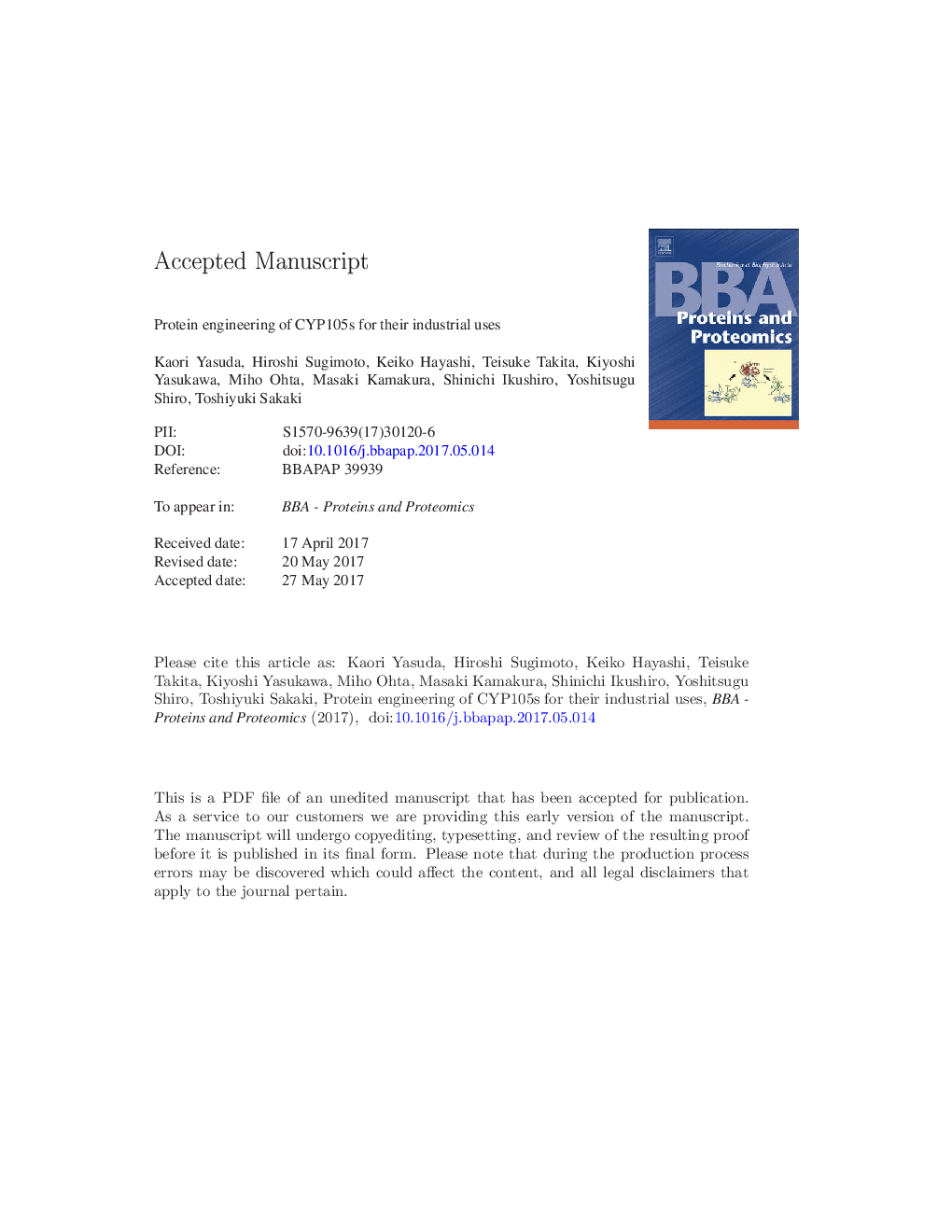| Article ID | Journal | Published Year | Pages | File Type |
|---|---|---|---|---|
| 7560507 | Biochimica et Biophysica Acta (BBA) - Proteins and Proteomics | 2018 | 35 Pages |
Abstract
Cytochrome P450 enzymes belonging to the CYP105 family are predominantly found in bacteria belonging to the phylum Actinobacteria and the order Actinomycetales. In this review, we focused on the protein engineering of P450s belonging to the CYP105 family for industrial use. Two Arg substitutions to Ala of CYP105A1 enhanced its vitamin D3 25- and 1α-hydroxylation activities by 400 and 100-fold, respectively. The coupling efficiency between product formation and NADPH oxidation was largely improved by the R84A mutation. The quintuple mutant Q87W/T115A/H132L/R194W/G294D of CYP105AB3 showed a 20-fold higher activity than the wild-type enzyme. Amino acids at positions 87 and 191 were located at the substrate entrance channel, and that at position 294 was located close to the heme group. Semi-rational engineering of CYP105A3 selected the best performing mutant, T85F/T119S/V194N/N363Y, for producing pravastatin. The T119S and N363Y mutations synergistically had remarkable effects on the interaction between CYP105A3 and putidaredoxin. Although wild-type CYP105AS1 hydroxylated compactin to 6-epi-pravastatin, the quintuple mutant I95T/Q127R/A180V/L236I/A265N converted almost all compactin to pravastatin. Five amino acid substitutions by two rounds of mutagenesis almost completely changed the stereo-selectivity of CYP105AS1. These results strongly suggest that the protein engineering of CYP105 enzymes greatly increase their industrial utility. This article is part of a Special Issue entitled: Cytochrome P450 biodiversity and biotechnology, edited by Erika Plettner, Gianfranco Gilardi, Luet Wong, Vlada Urlacher, Jared Goldstone.
Related Topics
Physical Sciences and Engineering
Chemistry
Analytical Chemistry
Authors
Kaori Yasuda, Hiroshi Sugimoto, Keiko Hayashi, Teisuke Takita, Kiyoshi Yasukawa, Miho Ohta, Masaki Kamakura, Shinichi Ikushiro, Yoshitsugu Shiro, Toshiyuki Sakaki,
